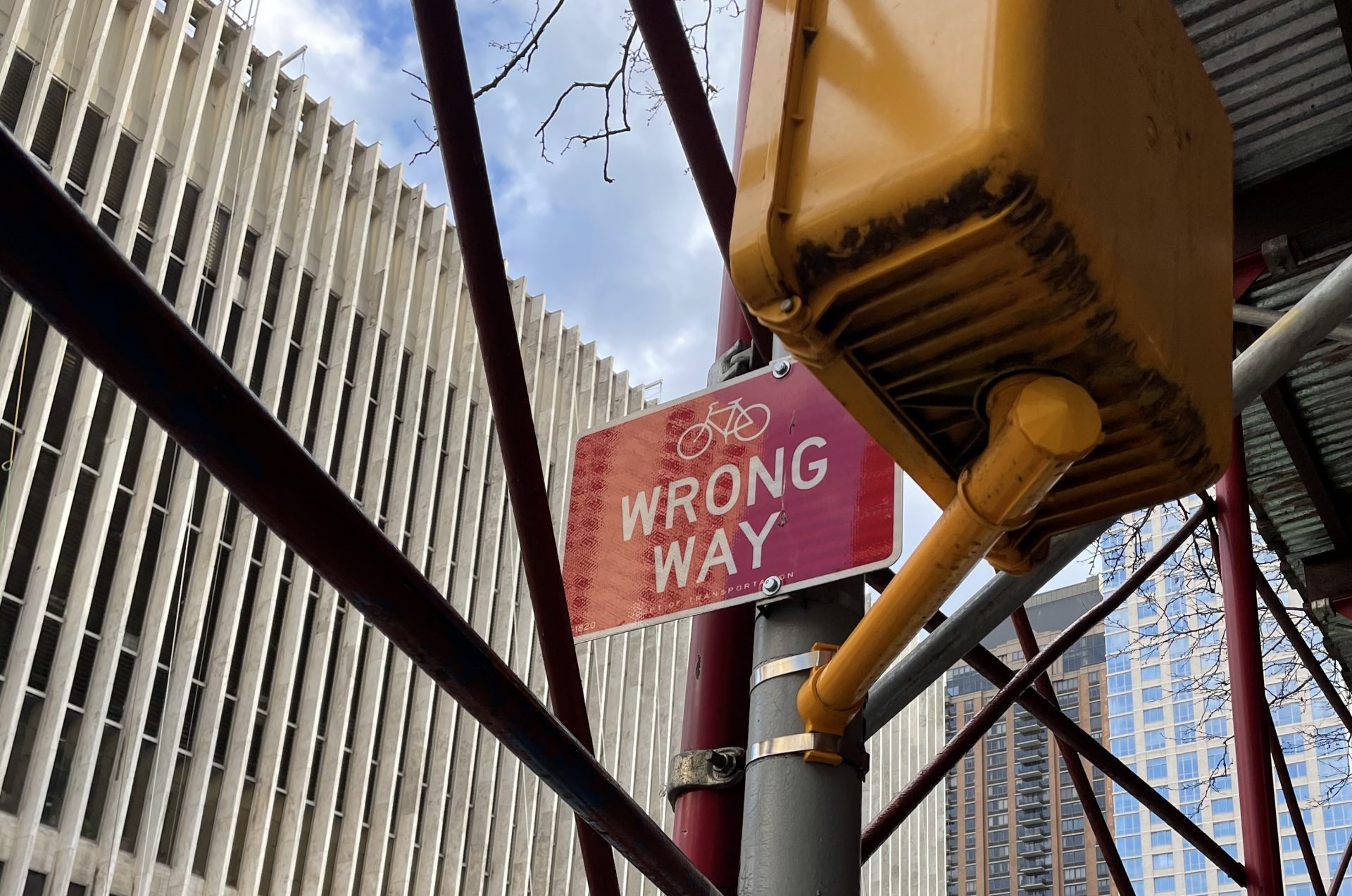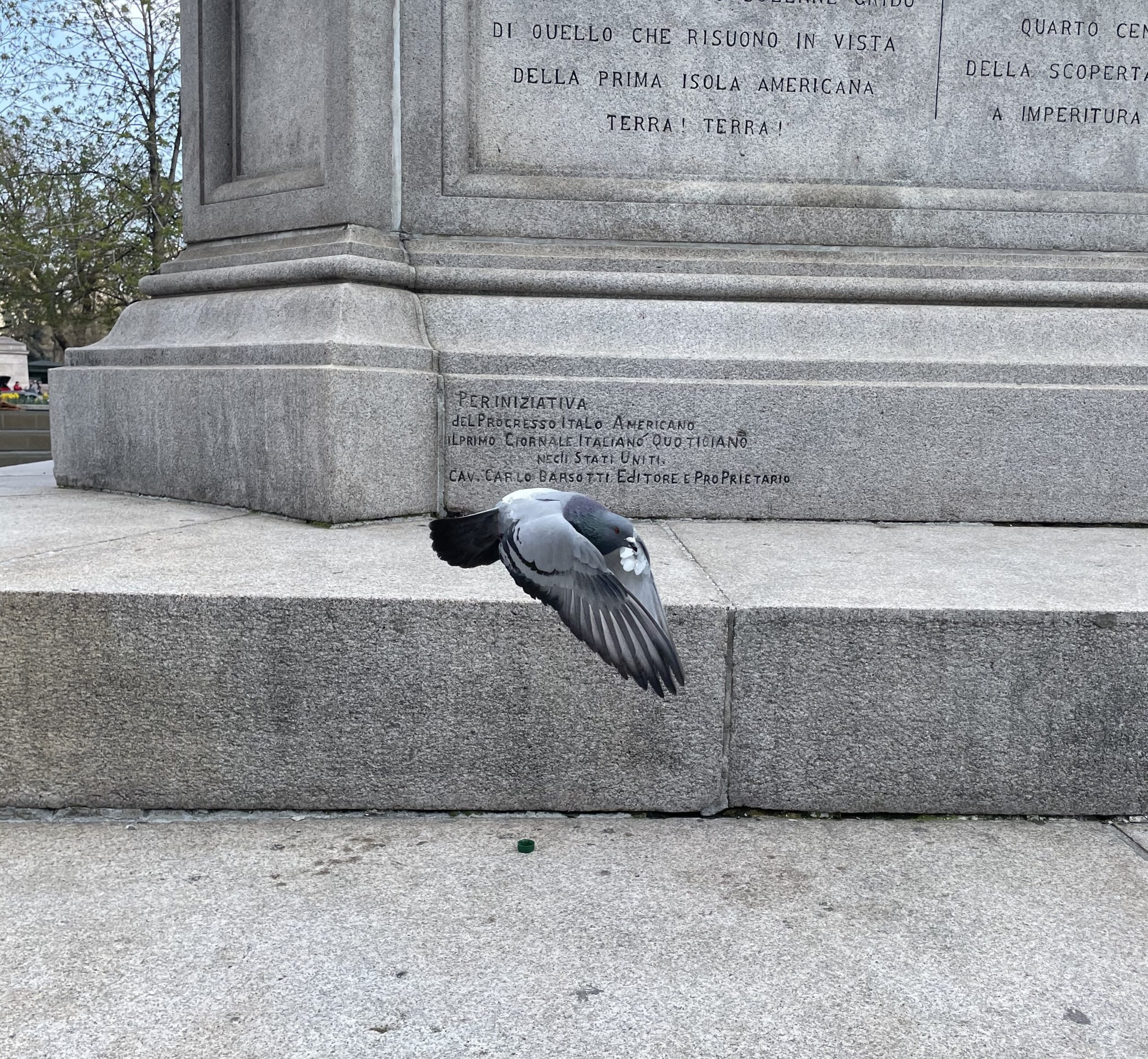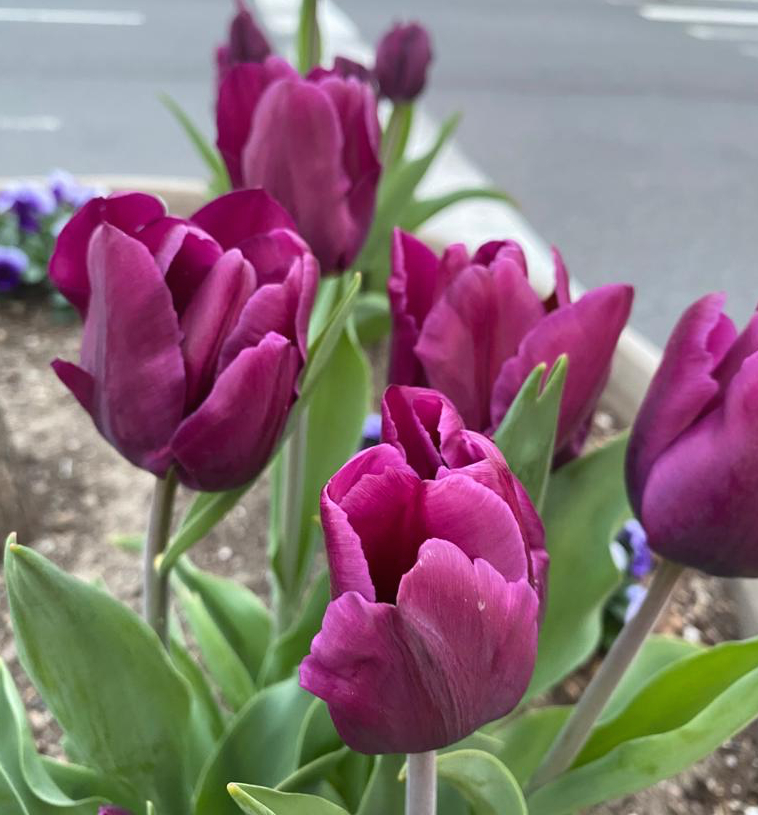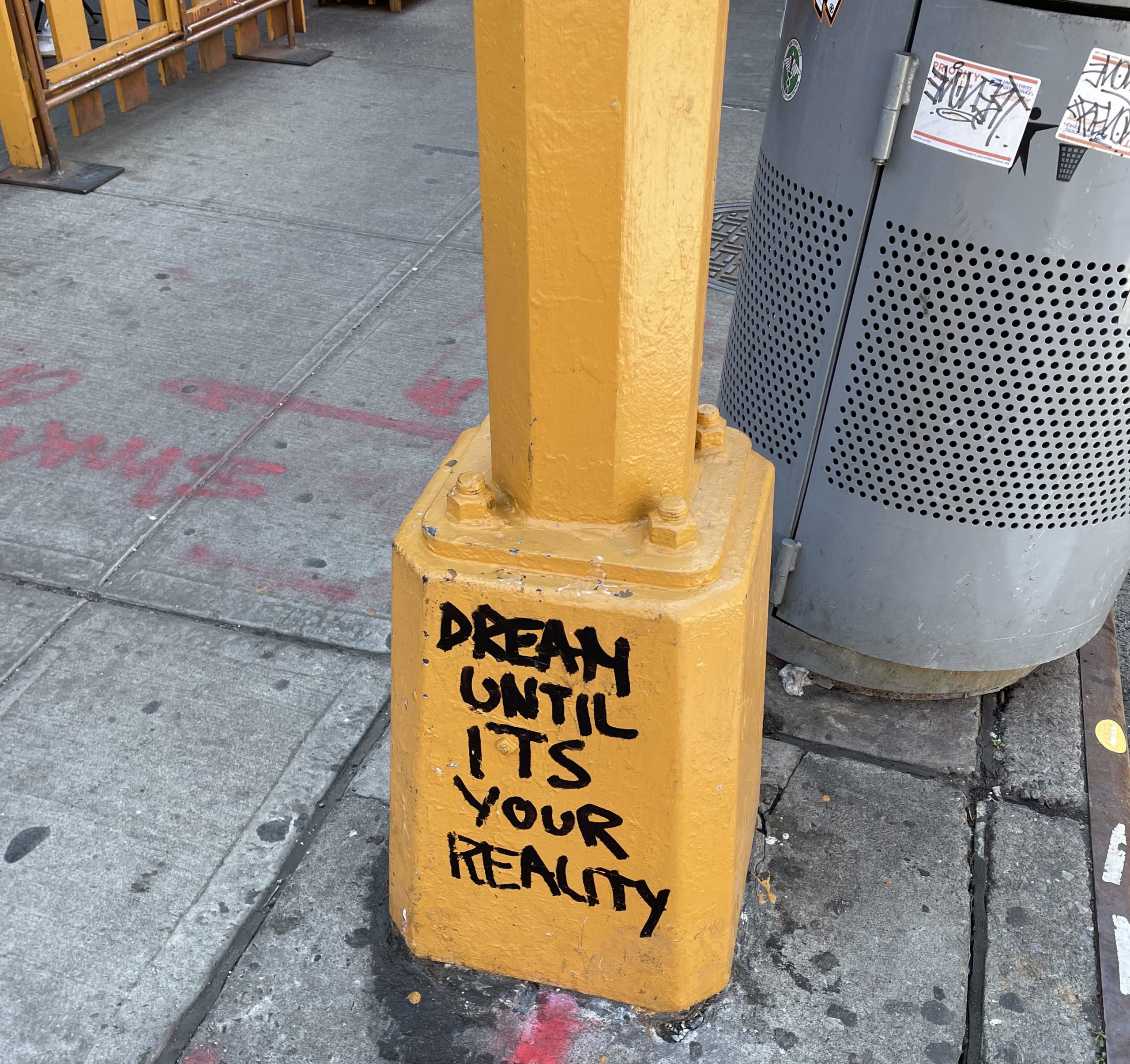This story is written under a state of emergency and public calamity. This story is written under the sign of isolation, which is also always already the sign of the fugue and of longing for the exterior. It’s a story of confinement, or rather several confinements. Academic, identitarian, physical, social, epistemic, urban. Linguistic. It is, also, a story of escape.
We set out to think of translation, without really realizing how timely a topic it was. As Kate Briggs (2020) writes in her beautiful meditation on This Little Art, translations expand the world (61). As Briggs suggests, a translation not only allows us to approach ideas and stories with which we are not equipped to engage, but through their mere existence do something vaster: they remind us of all the worlds that are unavailable to us due to the chance fact that they exist in a language we do not know.
Thus, translation offers a privileged standpoint from which to observe the ways in which the old differences of inside/outside collapsed over the last year. On the one hand, the spatiality of everyday life shrank. Especially for people engaged in academic or intellectual labor, life became limited to a few streets, a house, sometimes just a room or a bed. The outside became radically mediated, available only through windows, screens, speakers. It became hard to believe that out there life (not human life: life) was still happening. Sometimes, it became even harder to believe that life was still happening in here.
On the other, there was the illusion of a standardization of experience all around the world. As the waves of infections arrived at different places (as the epicenter of the pandemic moved from Wuhan to Rome, Madrid, New York, Guayaquil…) there was a new claustrophobia: not only that we were unable to go anywhere, but that There Was Nowhere To Go. That the only place, the only world left was this one, this limited space of dread, terror and exploitation, repeated over and over again over every corner of the planet: one world, at last. This illusion has now faded, of course, as North America prepares to vaccinate most of its population by the end of this year at the same time that India and Brazil scramble to find enough wood for their funeral pyres.
It is in this world that we are thinking translation. Still shell-shocked, we wonder what the place of this practice of connection and expansion is in this world. Not in the world to come, in the new normal that always seems to be just about to (be)come, but here, in this moment of danger. In the here and now which constitutes for us our brief, (e)strange(d) passage through U.S. academia.
Fred Moten and Stefano Harney (2013) are right. The University is a place of discipline and (re)production of relations of domination and control. But it is also a place of refuge. A place to cherish and criticize, to savagely raid and savagely protect (26). This is abundantly clear to us. We all come from different latitudes of South, from LA to Rio de Janeiro. We all came up North with a mix of hope and dread. We came following goals and dreams as much as escaping, cornered by the economic conditions of intellectual labor across the continent. Choosing among the survival options available to us today, in what’s left of the world. We came up North and we found a City and a University completely shuttered. A University which was no-where, dispersed across computers and protocols. How do you arrive at a refuge which is not a place, not a there? How do you then escape it, as Moten argues the critical scholar always does? Could any attempt at a decolonial practice in this refuge of and from the neoliberal (that is: the neocolonial) be thought without the attempt, the hope to escape?
Some of us, as graduate workers, gave a concrete answer and that answer is The Strike.
The rest, as (scholars? researchers? performers?) had to think of something else. An escape through translation seemed possible, since translation is already a practice based in spatiality, in the possibility of moving some-thing from one place to another or removing the barriers between places. An escape through translation, we dreamt, would mean using it to move meaning around without moving it towards some-where. Or without caring about the where in question. So much of this academic work seems to be about moving meaning from one place to another, about quoting, translating, revising, trafficking in ideas and profiting off the value created in the transit. What if we took these sheets of paper and instead of making sure that they ended up in-the-right-place, we threw them in the wind, just let them drift and watch them fly away? To drift, ir a la deriva, dérive, to be derivative. That is, after all, one of the worst crimes that an academic can commit (to).
—
There is a popular wine-based drink from Chile known as vino navegado (navigated wine), or simply navegado. I’ve always thought it was a beautiful name. Navegado consists of red wine spiced with cinnamon, sugar and orange slices, then heated to the brink of boiling. Navegado’s name probably comes from the orange slices which seem to sail or navigate on its surface. However, it is said that the name has a more interesting story. It is said that in the 19th century there was a ship with a cargo of Chilean wine which was turned back from a U.S. port after customs officers found it had gone bad. Once the cargo was back in Chile, it was sold with spices and fruit to hide its foul odor, along with the claim that navigated wine, wine which had traveled for some time at sea, acquired a better taste (Wikipedia 2021).
This is the account of our attempt at making teoría navegada, navigated theory. Not the “travelling theory” of which Edward Said (1983) wrote, nor the transculturation of Ortiz or Rama. We don’t care too much about the points of origin or arrival; we want to see what happens to the theory as it is traveled. Even if it ends up at the same place, what will have stuck to it in the process of bouncing around from place to place, from plan to plan, from language to language?
We started from two convictions. One, we were interested in the process of translation as a communicative phenomenon traversed by aesthetics, history, and power. Second, we wanted to place at the center of our work the digital infrastructures through which we were forced to collaborate by the COVID-19 pandemic, and the ways in which collaboration and togetherness as acts and as concepts became problematized.
We then started to problematize translation. We noted two things: the first is that translation is a performative act. Only when it is claimed that something is a translation does it become one, and it is expected (or conveniently assumed) that it has a certain “fidelity” to an original. As Diana Taylor (2003) notes, Christopher Columbus took a broad leeway in his first letter to interpret (that is, to translate) the words and actions of the “Indians” he encountered into acquiescence and declarations of material wealth and spiritual need (57-59). By claiming “powers of decipherability”, “Columbus not only invented himself as munificent and semidivine in his journal and letters, he also invented his interlocutors” (60), a complex process through which Columbus produced his statements as translation, at the same time that he produced the original. To a certain extent, this may be stated as a general principle: all translations invent their originals. Later, I found out that the translation theorist Theo Hermans had already written about “the performative power of the speech act this is a translation” through which a text acquires “the promise of representation” (Briggs 2020, 45).
We also realized that that speech act (this is a translation) muddled the relation of individual authorship between the text and any particular person. I remember (vaguely) an essay I read years ago by Spanish novelist and translator Javier Marías, in which he declared that the book of his that he was most proud of was his translation into Spanish of Laurence Sterne’s Tristram Shandy. There, he said (I’m remembering, paraphrasing, and translating, of course) is a book I could not have written. And somehow I did. At the same time, Sterne could not have written it either, but somehow it belongs to him, too. Borrowing Richard Schechner’s formulation, Marías did not write the book, but he also did not not write it (but I did not borrow that formula from Schechner, but from Taylor (2020, 10); see how easy and pleasurable it is, already, to let theory and words navigate adrift).
So we set out to work with these strange notions of translation, translation as a performance and a promise, and translation as a way to dilute authorship, authority. We chose four excerpts from readings on decolonial theory, from four theorists with whom we wanted to engage in our thinking and practice of translation, whether we agreed with them or not. As a methodology, we chose a game: teléfono descompuesto, telefone sem fio, Telephone. We would translate and retranslate the four excerpts, back and forth among the languages and dialects available to us —Portuguese, Standard English, Formal Spanish, Angelino Spanglish, español norteño—, without referring back to the original. The plan was to introduce a little bit of our own subjectivity to each version, to leave traces of our presence there, in the text, to stretch and test our “promise of representation” as translators, to add those spices which let you know that this theory has been thoroughly navigated.
Right in the middle of the week we set out to play, half of our team became incapacitated after falling ill with COVID-19. At first, we thought it was frustrating. We tweaked the calendar, tried to keep going. We rested and checked on each other while trying to keep everything going according to plan. It took us several days to realize we were terrified. That we were reacting in the same exact way that most of society did when the virus first struck, by trying to keep going the same nonetheless, by stubbornly ignoring its significance. But all of that drive and determination, that unwillingness to stop, step back and reconsider, to contemplate the irremediable nature of the changes the pandemic keeps on causing, all of that blistering intensity, what is it, if not pure panic?
We decided to stop for a while and lose our fear to change the plan. As our team recovered, we decided that our best option was to let the virus infect our project as it had our bodies, to let its presence be felt in the textual body, in the texture. So instead of processing the texts through our different translations, we decided to translate them using an automatic online translator. We ran the texts through the algorithm, back and forth, tens of times, hoping for the logic of the glitch to replicate the a-human transformative agency of the virus. What we ended up with were a set of texts which had gone from English to English and been radically transformed in the process; more precisely, we ended up with two different sets of texts, connected only by the details they shared (proper names, number of sentences, some verbs) and our vague “promise of representation”, our claim that in some way they were the same.
The next step is difficult to explain because it seems arbitrary. Maybe it responded to our already described desire to escape, to continue escaping, away from scholarship, from the text, from the desk-and-computer universal model of work exacerbated by the pandemic. Why stop here, we thought, in these texts (different texts, but still texts)? Why not continue drifting, gliding, away? We wanted to go out, in every sense. And so we found a way. And so we chose a way. And so we made a way.
I found / I chose / I remembered the Método Universal de Poesía Derivada (MUPD, Universal Method for Derived Poetry). Mexican poet Daniel Saldaña París developed it 12 years ago as a way to translate poems into urban situations in Mexico City, interventions in the day-to-day practice / experience of the city. The premise is simple: a person stands in a corner with a poem at hand. They will walk one block per verse, following a set of instructions arbitrarily drawn-up by Saldaña París (if the verse ends in a consonant, walk one block left, etc.). Every certain number of verses, the person takes a picture. In the end, the resulting action, pictures, and route will collectively constitute the translation of the poem.
Saldaña París translated the general workings of the MUPD from the ideas and experiments of the Situationist International, that Paris-based group of theorists and disrupters of everyday life from the 60s and 70s. The Situationists “sought not the rational city but the playful city, not the city of work but the city of adventure. Not the city that conquers nature, but the city that opens towards the flux of the universe” (Wark 2011, 20). They were the first to think of the drift, the dérive as a way to escape (the city, the mandates of art, capitalist time, the 20th century…) Besides, their theory of intellectual labor encouraged reappropriations and adaptations, since they believed that “for past works to become resources for the present requires their use in the present in a quite particular way. It requires their appropriation as a collective inheritance, not as private property” (37). Exactly what Saldaña París did when he developed MUPD and placed it online for everyone to use. Exactly as we collectively did when we adapted the instructions so that they could be used to translate excerpts from critical theory into experiences in the city (a city which looks like New York, but which is also, at the same Paris translated into Mexico City and then retranslated into Manhattan).
We didn’t even name our new method. We just took it and ran, trying to see if we could use it to escape.
—
The first text we chose was by Rivera Cusicanqui (2012). In her criticism of “the role of intellectuals in the domination of empire” (101) we saw an embodiment of our own discontents with the neoliberal institution (one of those palaces disseminating and administering colonial-epistemic technologies of power of which she writes (101)) in which we take refuge. Our attempt to dilute, to let drift, to break or short-circuit the promises of translation was also an attempt to find other ways to inhabit New York University while resisting its productivity mandates. The second one was by Taylor (2020). We chose it because we felt an affinity with its methodology of walking, and especially with its intention to think critically on the possibility of translating scholarship into action: “It’s hard to know that we can only do what we can do; harder still to accept that we must do what we can do” (4). The third was from López Intzín, as his idea of language as situatedness led us to think deeply of our position (both geographical and linguistic) at the center of various empires. Lastly, we chose a quotation from Epistemologies from the South (2016) by Boaventura de Sousa Santos in which he suggests that translation can be a generous act, a gesture through which we go towards the other at the same time that we try and bring them towards us. “We do not have to coincide; we have to converge”, writes Sousa Santos. “We do not have to unify; we must generalize. We translate into one another reciprocally and are very careful lest some engage more in translation than others” (16).
We walked in Midtown and in Alphabet City, next to Central Park and next to the NYU campus. We walked a city with long blocks and an abundance of landmarks, both monuments and anti-monuments. We registered the visual culture of a city which knows it is being observed and tries to make most of it, saturating every corner, lamp post and signal with messages and caricatures. Intent on looking and walking, on looking as walking, we realized that our eyes also needed a respite from time to time. I don’t want to elaborate too much on our situationist / derived / adrift translations. On the one hand, the gesture could be read as yet another translation, this time to the structure and jargon of semi-scholarly writing. On the other, that is a language which excels at disciplining, controlling meaning. I believe it is better that the pictures which remain as register elicit a response, a reading, by themselves.
Note: the first line is a translation from Clarice Lispector’s novel A hora da estrela (1977); the question about panic is a translation from Mariana Enríquez’s editorial “La ansiedad” (2020).
Enríquez, Mariana. 2020. "La Ansiedad." Revista de la Universidad de México, 1 May 2021. https://www.revistadelauniversidad.mx/articles/41725f69-40a0-4229-b7d2-8bc714717cd2/la-ansiedad. Lispector, Clarice. 2017. A hora da estrela. Rio de Janeiro: Rocco, López Intzín, Juan. 2021. "Sp’ijilal O’tan: Knowledges or Epistemologies of the Heart." Resistant Strategies. -. New York: Tome Press, https://resistantstrategies.tome.press/spijilal-otan-knowledges-or-epistemologies-of-the-heart/. Wark, McKenzie. 2011. The Beach Beneath the Street. The Everyday Life and Glorious Times of the Situationist International. London: Verso Books, Método Universal de Poesía Derivada Accessed 1 May 2021. https://mupd.wordpress.com/. Marías, Javier. 2021. Literatura y fantasma. Barcelona: DeBolsillo, Said, Edward. 1983. "Travelling Theory" The World, the Text, and the Critic. 226-247. Cambridge: Harvard University Press, Wikipedia Accessed 1 May 2021. https://es.wikipedia.org/wiki/Navegado_(bebida). Harney, Stefano, and Fred Moten. 2013. The Undercommons: Fugitive Planning and Black Study. Wivenhoe: Minor Compositions, Briggs, Kate. 2020. This Little Art. London: Fitzcarraldo Editions, Rivera Cusicanqui, Silvia. "Ch’ixinakax utxiwa: A Reflection on the Practices and Discourses of Decolonization." he South Atlantic Quarterly 111. no. 1: 2012. 95-109. Taylor, Diana. The Archive and the Repertoire Performing Cultural Memory in the Americas. Durham, NC: Duke University Press, 2003. Santos, Boaventura de Sousa. Epistemologies of the South: Justice against Epistemicide. New York: Routledge, 2016. Taylor, Diana. 2020. ¡Presente!: The Politics of Presence (Dissident Acts). Durham, NC: Duke University Press Books,




